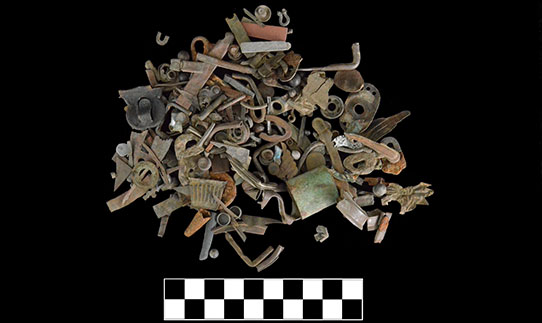Adventures in Archaeology Collections: Parts & Pieces
What do you see in this photo? (click photo to see larger image)
Objects from a bag originally labelled “miscellaneous metal” (former 2010.99.3029
On the surface, it is a random pile of metal. But these aren’t just miscellaneous items, even though the bag they were stored in was originally labeled “miscellaneous metal”! They are artifacts that add to the story of a site. They are evidence of the things people used and the activities in which they participated. These are objects that were utilized, stored, discarded, lost, or left by people who lived at, worked at, or passed through Fort Rice (32MO102).
Part of the fun in sorting a bag of small parts and pieces is figuring out what they are—discovering that the pieces are part of something. Let’s take a closer look at a few of the items in that pile.
This plain-looking piece of metal is a tobacco twist or plug tag.
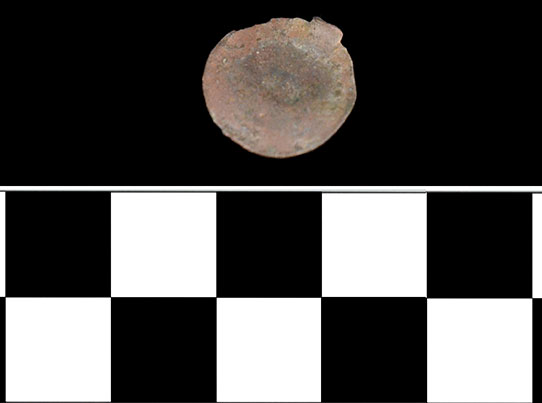
The artifact: a tobacco twist tag (2010.99.7493)
Both tobacco plugs and twists were used for pipe smoking or as chewing tobacco. Tobacco twists are formed by rolling and twisting tobacco leaves into a tight rope-like form. Cut blocks of pressed tobacco are called plugs. The tags were attached to the twists by a long prong while plug tags were attached with two short prongs. The tags were used to identify the tobacco brand. Any trace of a logo or decoration has worn off of this tag. Most tobacco tags were colorful like this more intact example from the site of Fort Berthold I.
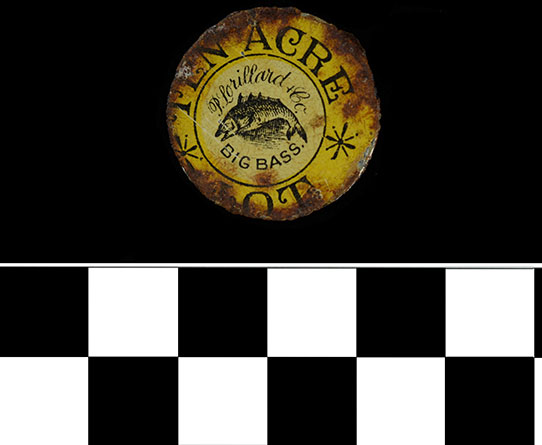
An example: a tobacco twist tag from Fort Berthold I fort site (12711.144)
Some artifacts are only small parts of a larger object—like this item. It is a bolster (an end piece) from a pocket knife.
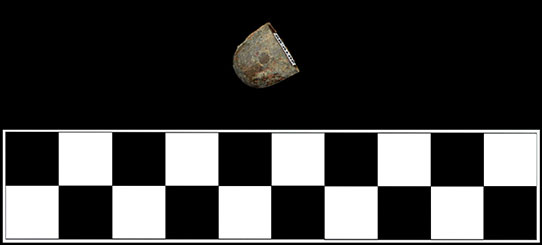
The part: a pocket knife bolster (2010.99.7477)

Examples: almost complete pocket knives from Fort Rice. See where the bolsters fit? (2010.99.6179 & 2010.99.6187, photos by Doug Wurtz & David Nix – edited SHSND)
These odd looking fragments are pieces of friction primers used to ignite the gun powder in artillery.

Parts: friction primer fragments (2010.99.7480, photo by Doug Wurtz – edited SHSND)
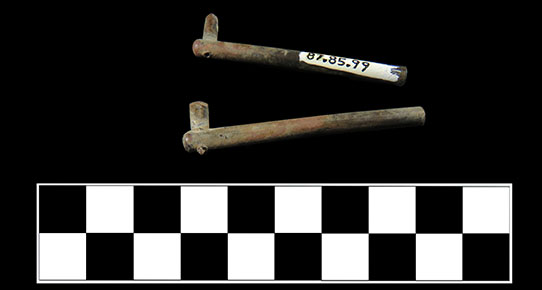
Examples: more complete friction primers also from Fort Rice (1987.85.98-99)
These are pieces of military insignia. There are at least three different types of hat insignia and what appears to be part of a regiment number or company letter in this group.
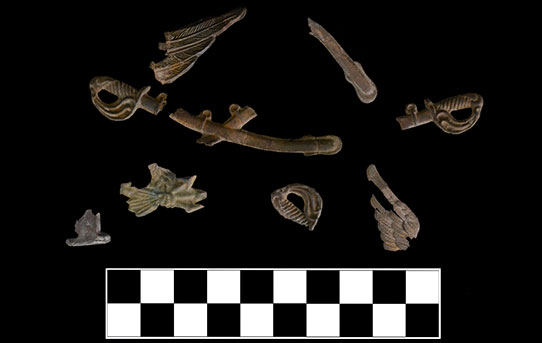
Parts: military insignia fragments (2010.99.7487)

Example: a complete cavalry hat insignia for an enlisted man, from Fort Rice (12003.2445, photo by Doug Wurtz – edited SHSND)
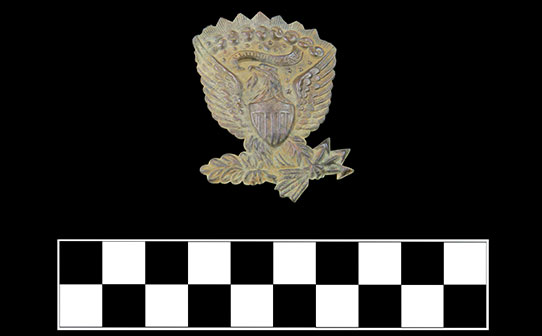
Example: a Model 1858 dress hat (Hardee hat) pin from Fort Rice (2010.99.6132, photo by Doug Wurtz – edited SHSND)

Example: an enlisted man’s cavalry dress helmet insignia from Fort Rice (2010.99.6144, photo by Doug Wurtz –edited SHSND)
This is part of a shoulder scale turnkey or button base.

The part: a button or turnkey base from a shoulder scale (2010.99.7488)
Shoulder scales (a type of epaulet sometimes called brass scales, or metallic scales) were used as part of military uniform and were worn on the shoulders. The turnkey helped attach the main part of the shoulder scale to the rest of the uniform. Shoulder scales are made from many distinct pieces.
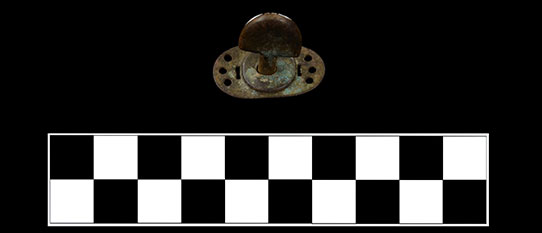
Example: a complete turnkey or button from a shoulder scale from Fort Rice (2010.99.3493)
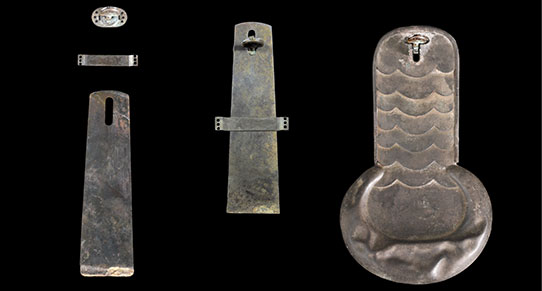
Example: attachment parts for a shoulder scale, right- the attachment pieces, middle - how the attachment pieces fit together, right – how the turnkey looks when fit attached to the complete shoulder scale (all pieces from Fort Rice)
Of course there are many other items visible in the first photo. Other artifacts so far identified in this group of objects include pieces of lead shot, a thumb tack, buckles, buttons, pencil leads, rivets, bell fragments, pocket watch parts, and even part of an earring! Two non-metal items were found in same bag as well. If you are up to the challenge, see if you can find the light blue glass bead and abalone shell fragment in the first photo! I’ll post the answer below.
How do you identify things you don’t recognize? I’ve had a lot of help identifying these and other objects. Asking other people is a good start--other staff at the historical society (museum, archives, education, paleontology, archaeology and historic preservation staff, even custodial staff), researchers, as well as volunteers and members of the public have all helped me. Online sources can also be helpful—like research blogs, re-enactment discussions, and museum websites. And of course, it is still hard to beat a really good book when looking for information (for instance, The U.S. Army in the West, 1870-1880 by Douglas C. McChristian was very helpful with many of the objects in this post).
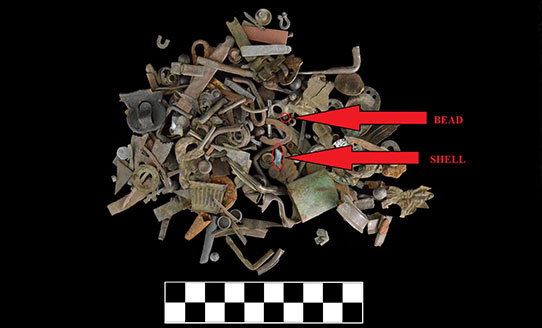
Did you find the glass bead and piece of shell in the first photo?


